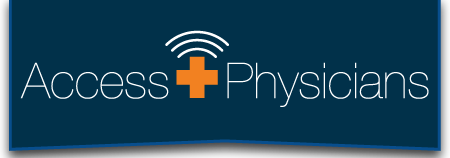The Pundits Are Wrong About This Being Telemedicine’s Moment (originally published on Medium March 30, 2020)
It’s been here all along. Government is just catching up.
With social distancing and stay home orders the new normal, the COVID-19 pandemic has thrust telemedicine and telehealth into the spotlight. But, we should be clear about one thing. This is not technology’s moment. Rather, it’s time for the practice of medicine to advance with a paradigm shift.
The President’s March 16 guidance to slow the spread of the virus was followed quickly by temporarily loosening the restrictions on Medicare coverage for telehealth so that beneficiaries can still connect with their health care professionals…but from a safe distance within their own homes. With the federal actions, the rural originating site limitation on Medicare payment is removed. Tele-services can now be provided no matter where the beneficiary is located geographically or what type of care delivery site, which, for the first time allows beneficiaries to receive telehealth services from their home.
And, where Medicare goes, so go private payers (usually).
As the co-founder and CEO of one of the nation’s largest physician-led telemedicine groups, I welcome these policy changes. The previous rules were antiquated and didn’t align with where patients are in terms of technology acceptance and use of and comfort with mobile and online communications tools, such as Skype, Facetime and Zoom. While use of telehealth, prior to COVID-19, was nowhere near as widespread as mobile banking or online retail, the reason wasn’t lack of consumer interest or satisfaction. In fact, according to J.D. Power, overall customer satisfaction for telehealth services is among the highest across all healthcare, insurance and financial services.
So, the government is just catching up to where patients already are.
Yet, while the wider embrace of telehealth is welcomed, we have to remember that at its core, it is medicine, not technology. It is health care to heal the sick. It has to be done well…with both clinical excellence and compassion.
I’ve been providing inpatient telemedicine care for nearly a decade. I and my colleagues have provided specialty and subspecialty care in 180 hospitals to more than 1.5 million high acuity patients with complex conditions and needs, including management of respiratory failure requiring mechanical ventilation, septic shock, vasopressors, advanced heart failure, and cardiogenic shock.
What we hear over and over again from patients is that their care experience with us is not just as good as an in-person experience. It’s better.
I attribute our success to practicicing telemedicine as an art and a science. First, all our physicians are board-certified or board-eligible and are peer-referenced to ensure clinical excellence. Second, all are trained in providing care and consultation through virtual means. Our “break through the screen” curriculum teaches physicians the importance of connecting emotionally and personally with patients, their families and caregivers, and other health care professionals and how to minimize the physicial barriers to interpersonal connection and maximize the integrity and effectiveness of the patient-physician relationship.
Doing telemedicine well and compassionately for nearly a decade means that we are now able to be leaders in the fight against COVID-19. We are working with hospitals to leverage the power of telemedicine to bring much-needed specialists, such as infectious disease and pulmonary & critical care, to the bedside to care for patients with COVID-19. Our nationwide telemedicine network of board-certified and board-eligible specialists and subspecialists also gives hospitals on-demand access to the expertise of cardiologists, neurologists and other highly trained and skilled physicians all while limiting infection exposure for medical professionals and conserving increasingly scare, yet essential, personal protective equipment. And, we do both of these things while prioritizing the human connection with our patients and fellow health care professionals, which we believe is particularly important in this time of uncertainty, vulnerability, and deep anxiety.
The pundits are wrong that telemedicine’s moment has arrived. We know it’s been here for a while. What has arrived is our opportunity to show it at its best.



